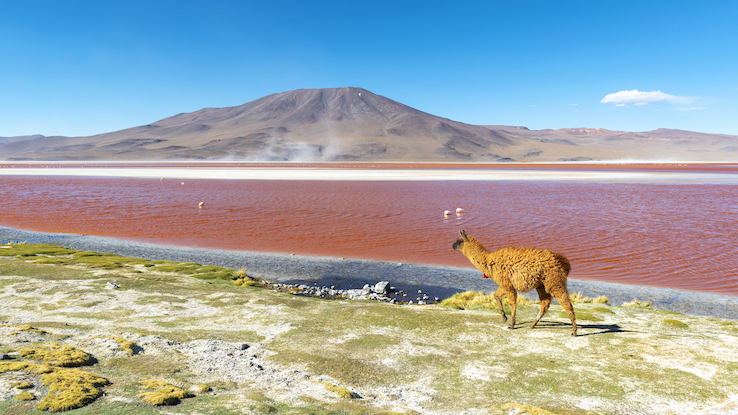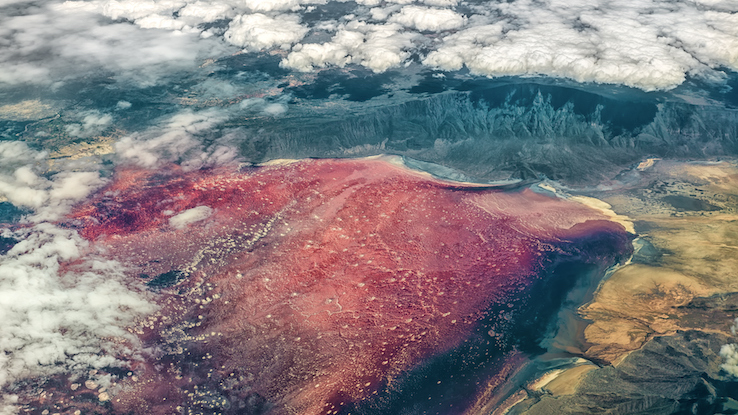Find Out How Salt Colors These Pink Lakes

When people go on a sightseeing holiday, it’s often to an iconic city like Paris or London. Visiting pink lakes is not on most people’s bucket list, but these natural phenomena can be breathtaking when witnessed in person. Such lakes can be found across the globe, including in Europe, Africa, South America and Australia. Let’s take a look at where you can find these pink lakes and what gives them their distinct color.
Lake Hillier – Australia

Lake Hillier lies in Western Australia. This pink lake is smaller than most lakes around the world, reaching only 600 meters in length. Surrounded by eucalyptus and paperback trees, the vibrant pink lake looks amazing against the rich green foliage.
Another stunning contrast is that this lake sits right on the shoreline of the Southern Ocean, which is deep blue. Like other pink lakes, scientists have attributed the vibrant pink hue of the water to the bacteria and algae living within it.
Today, Lake Hillier is primarily a tourist attraction, but when it was discovered by settlers in 1802, it was mined for its salt. Fish cannot survive in Lake Hillier because of the water’s concentrated salt content, which is similar to that of the Dead Sea. However, the surrounding trees support an array of wildlife worth exploring.
Hutt Lagoon – Australia

Australia is again the port of call for another stunning pink lake, Hutt Lagoon. This bright pink lake lies 2 kilometers north of the mouth of the Hutt River in the Midwest region of Western Australia and near the coast of the Indian Ocean.
The best land-based view of this pink lake can be experienced on Port Gregory Road. This route offers parking only a walking distance away from the lake. The most spectacular views can be observed when the sky is clear and the sun is overhead. The sunlight helps to enhance the vivid colors of the waters, but cloudy days can dampen the show.
Carotenoid-producing algae such as the Dunaliella Salina are thought to be behind the lake’s pink hue. Because this lake is salty, it contains limited life within its waters. It is still, however, home to some small invertebrates and crustaceans.
Las Salinas de Torrevieja – Spain

Spain’s Costa Blanca is the location of our next pink lake, Las Salinas de Torrevieja. Much like other pink lakes, Las Salinas de Torrevieja has a high level of salt. This lake is said to have been mined for its salt as far back as the 14th century.
Again, the eye-catching pink colors are attributed to algae and bacteria, such as the halobacteria that can survive these salty waters. Not much else but brine shrimp can be found here.
Lake Retba – Senegal

Lake Retba is located only an hour from the capital city of Senegal. Dunes separate this pink lake from the Atlantic Ocean. The salt content of Lake Retba is equivalent to that of the Dead Sea. Lake Retba is home to algae and microorganisms similar to those in other pink lakes across the globe.
The algae and bacteria that live in the lake produce a red pigment that helps them absorb sunlight. This same pigment is what gives the lake its pink color. However, with such a salty environment, don’t expect too many encounters with the local wildlife from the lake itself, apart from these salt-loving algae and bacteria.
Laguna Colorada – Bolivia

Bordering Chile and lying to the southwest of Bolivia is the shallow salt lake known as the Laguna Colorada. The lagoon itself is located in the Eduardo Avaroa Andean Fauna Reserve, and although it extends over 60 kilometers, the lake’s waters are no deeper than 4 feet.
Laguna Colorada differs from other lakes, as it is more red than it is pink. This red hue is enhanced by bright blue skies. The lake itself is situated at the base of the Andes. The striking redness is produced by algae and bacteria.
Because the waters are so shallow, the environment is far less hostile to local wildlife, which means you can expect to see the rare Andean flamingos and even llamas.
Lake Natron – Tanzania

Finally, we have Lake Natron, a salt and alkaline lake located in the north Ngorongoro District of the Arusha Region in Tanzania. Despite the hostile environment, this lake is a popular breeding ground for flamingos and other birds. It sits below an active volcano. Algae, which thrive in this environment, help to give the water its distinct color. With a pH of 10.5, only wildlife that has adapted to such an environment can survive these mysterious waters.





